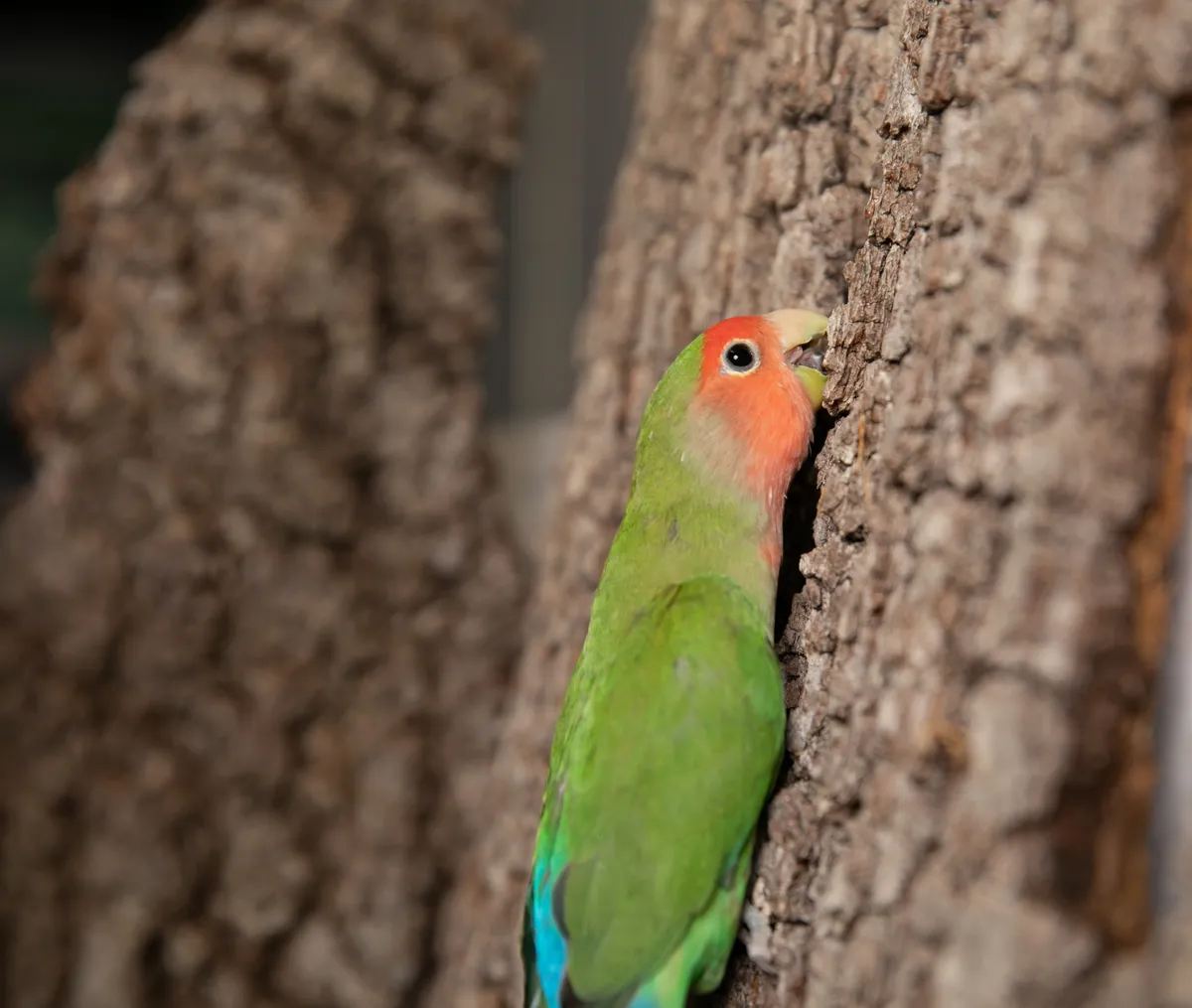There aren’t many three-legged animals out there. Parrots, though, could be seen as a rare exception.
New research shows how they have transformed their beaks into something that functions as an extra limb for climbing trees.
It won’t be news to parrot fans that these adaptable, intelligent birds use their beaks to climb.
Indeed, Michael Granatosky, who leads the research group at the New York Institute of Technology says the work was inspired by his own pet parrot.
“That’s how I first saw this behaviour,” he says. “To see something climb with its head was super-weird, so I really needed to figure out how they do it.”
The team’s work on rosy-faced lovebirds shows that their beaks are not used as simple grappling hooks to maintain contact with the surface while their legs do the hard work, but that they generate a lifting force equal to that produced by the legs.

“They have to have neck muscles in place that can support body weight,” says Granatosky. “In humans, neck muscles can only support 19 per cent of body weight, while for the parrots, it’s more like 70 per cent. Also, in order to not pitch backwards, parrots produce a uniquely strong bite force.”
He says that, unlike most climbing birds such as woodpeckers, nuthatches and treecreepers, which hop up a tree with both feet at the same time, parrots are striders – they use their feet alternately, which would leave only a single point of contact with the tree at any one moment.
“This whole beak thing could be a consequence of the fact that they couldn’t hop like a woodpecker.”
And neither do they have arms like primates do.
“We think of primates and parrots as having had very similar evolutionary histories - they are both ancient, arboreal lineages that show adaptations to life in the trees,” says Granatosky’s colleague Edwin Dickinson. “It’s just that, due to the anatomical constraints of being a bird, they’ve had to co-opt novel mechanisms to facilitate climbing.”
Read the full paper in Proceedings of the Royal Society B.
Main image: the beak of a rosy-faced lovebird functions like a limb. © Steven Gaines, New York Institute of Technology College of Osteopathic Medicine